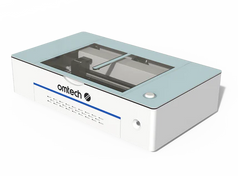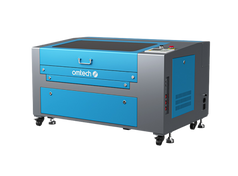An Complete Guide to Polycarbonate Laser Cutting
Laser technology represents a versatile tool applicable across various materials, with polycarbonate emerging as a favored option for its robustness and clarity. This comprehensive manual delves into the intricacies of polycarbonate and its utilization within laser cutting processes.

Understanding Polycarbonate
Polycarbonate stands out as a top-tier thermoplastic polymer renowned for its exceptional strength and transparency, rivaling glass while surpassing it in impact resistance. Its pliability and ability to be molded at room temperature with precise edges offer a wide scope for design and manufacturing flexibility.
Moreover, polycarbonate boasts remarkable thermal resistance and flame-retardant characteristics, rendering it ideal for outdoor settings like automotive components and architectural glazing, enduring harsh environmental conditions. Its versatility extends to electrical applications, where its thermal resilience and safety features make it a preferred choice.
Polycarbonate's Laser Cutting Attributes
In laser cutting, polycarbonate's durability and reduced susceptibility to cracking make it an optimal material for intricate designs. However, achieving pristine cuts necessitates meticulous calibration to prevent thermal damage. The material's high glass transition temperature allows it to endure substantial heat, crucial for maintaining structural integrity during laser cutting processes.
While polycarbonate offers excellent light transmission and minimal distortion, achieving clear outcomes without blemishes demands precise laser settings. Variations in material thickness mandate adjustments in laser power and speed to prevent excessive heat accumulation, ensuring clean cuts without compromising quality.
Advantages of Laser Cutting Polycarbonate
Laser cutting polycarbonate offers unparalleled precision and complexity in design, enabling the creation of intricate patterns unattainable through traditional cutting methods. The contactless nature of laser cutting minimizes material distortion and stress fractures, preserving the structural and aesthetic integrity of polycarbonate components.
The adaptability of laser cutting setups to accommodate various thicknesses and shapes underscores its versatility for diverse applications. This flexibility facilitates swift adjustments, making it suitable for short production runs and prototype development without the need for costly tooling changes.
Applications of Laser Cut Polycarbonate
The durability, clarity, and flexibility of laser-cut polycarbonate find wide-ranging applications across various industries:
- Electronics and Electrical Components: Polycarbonate's insulating properties and flame retardance make it ideal for intricate electronic parts.
- Automotive Industry: Laser-cut polycarbonate is instrumental in producing precise automotive components for enhanced safety.
- Medical Devices: Polycarbonate's sterile edges are crucial for creating precise components in medical equipment.
- Architecture: Polycarbonate panels offer a lightweight, impact-resistant alternative for architectural applications.
- Signs and Displays: Laser-cut polycarbonate facilitates the creation of intricate designs for signage and displays.
The Laser Cutting Process for Polycarbonate
Utilizing a high-intensity laser beam, the laser cutting process involves creating a digital vector file to guide the laser's path and intensity. Proper configuration of the laser cutting machine, including adjustments to power, speed, and focus, ensures efficient energy absorption by the polycarbonate, preventing material damage.
Upon placement of the polycarbonate sheet in the laser cutter, the machine follows the vector file's instructions, vaporizing or melting the material to form precise cuts. Post-cutting, cooling may be necessary for thicker materials to stabilize the dimensions and properties of the pieces, followed by cleaning to ensure a flawless final product.
Selecting the Right Laser Machine for Polycarbonate Cutting
OMTech stands out as a leading provider of polycarbonate laser-cutting machines, offering affordable options suitable for hobbyists and manufacturers alike. Explore their diverse range of laser cutters to harness the power of laser technology for your projects.























